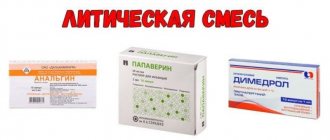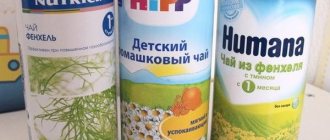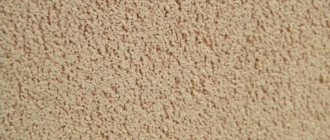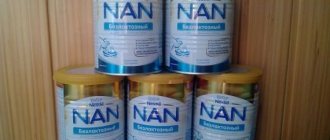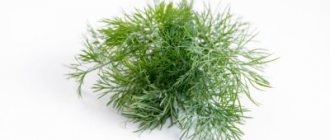- Child's health from A to Z
Children nowadays are very susceptible to the influence of negative factors of modern life. That is why the number of children with allergic manifestations has recently increased. A certain percentage of these problems are hereditary, but most cases of allergies are still related to diet.
Poor ecology, an abundance of preservatives, dyes and other additives - all this negatively affects the digestive system in children and leads to allergies.
There is also a genetic predisposition to atopy, and in this case, food allergy will be its first sign.
In any case, the first way to combat allergies is to correct your diet. It should maximally satisfy the needs of a rapidly growing child’s body, be balanced, strengthen protective functions and influence proper metabolism. And, of course, in case of predisposition to allergies, baby food should be hypoallergenic. Before studying information about which hypoallergenic formula is better, you should study information about the causes of allergies and the existing types of hypoallergenic food for children.
Which children are predisposed to allergies?
- Scientists have already proven the connection between the consumption of highly allergenic foods during pregnancy (in particular, large amounts of cow's milk) and the predisposition of the developing fetus to allergies. When a baby growing in the womb comes into contact with food allergens, a primary immune reaction occurs, expressed in a decrease in interferon in the blood. Such children at birth have a high risk of developing allergies to food components.
- Allergic manifestations often occur in babies on mixed and artificial feeding. This is due to the fact that most formulas contain cow's milk, the protein of which contains a large number of allergens: lactoferrin, albumin, b-lactoglobulin, a-lactalbumin, etc.
If your baby often experiences skin lesions such as urticaria, atopic dermatitis or allergic edema, and also has gastrointestinal disturbances (severe colic and abdominal pain, vomiting, unstable stool), then a milk protein tolerance test should be performed. If the result is positive, you should switch to special hypoallergenic mixtures.
Types of therapeutic nutrition
The composition of medicinal products may include fully hydrolyzed (split) whey protein, casein hydrolysate (split milk protein).
There are others based on amino acids (hereinafter referred to as AMK), replacing proteins (cow, goat or soy). Which one is better can only be determined experimentally, since clinical studies confirm the effectiveness of each type. Let's take a closer look.

Medical nutrition
Products with split whey proteins
AMK, a breakdown product of proteins ingested from food, is well absorbed without causing side effects such as skin rashes or gastrointestinal disturbances.
Article on the topic: Cream (ointment) for allergies on the face - symptoms, reviews and treatment
Before prescribing amino acid mixtures, a powder without cow protein, with hydrolyzed (split) whey, is selected for children with allergies.
The peculiarity of this product is its bitter taste. It helps well with lactose intolerance. It contains medium-chain triglycerides (special fats that are better absorbed by small bodies), and its nutritional value is higher than that of casein hydrolyzate-based products.
When feeding, there is a positive dynamics, which is especially necessary for premature babies or those who suffer from malnutrition (lack of weight).
In this case, the child’s stool may become liquefied and acquire a greenish tint, which is considered normal. Popular brands with whey protein are Alfare, Alfare Alergy, Pepticate and others.
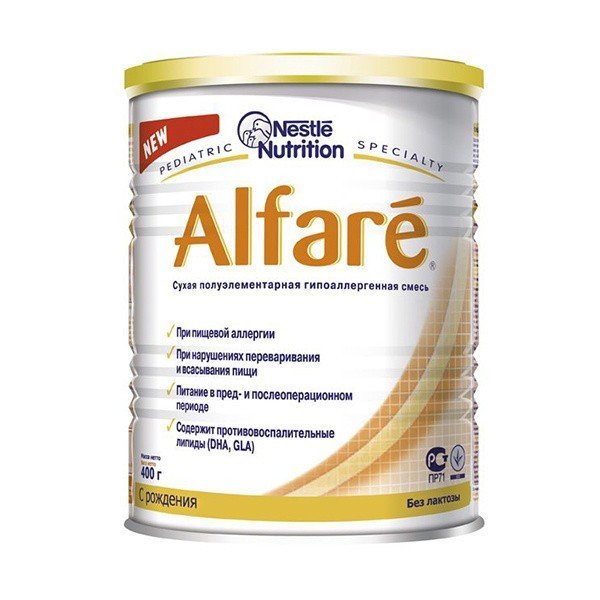
Blends with split whey proteins
Products with casein hydrolyzate
The powder, which contains casein hydrolysate, has a more pronounced bitter taste. Due to the presence of AMK, it rarely causes side effects, and it is prescribed for moderate to severe allergic manifestations or in cases where the still fragile body does not absorb whey protein.
When prescribing diet therapy, doctors give preference to this particular “drug”. If a positive effect is not observed within two weeks, Nutramigen Lipil (1 and 2), Pregistimil Lipil, Frisopep AS are prescribed.
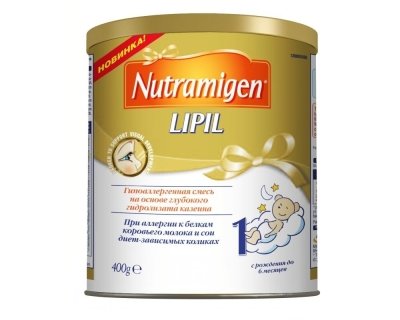
Casein hydrolyzate mixture
What is hypoallergenic baby formula?
These mixtures are also called hypoantigenic or low in allergens. They have been known since the 50s of the twentieth century. The basis of such nutrition is protein (animal or plant origin), which has undergone a process of hydrolysis to form amino acids and peptides.
Modern hypoallergenic formulas for children must meet the following requirements:
- contain a minimum amount of allergens;
- satisfy all the needs of a growing child’s body;
- At least 90% of children allergic to cow's milk should tolerate this product.
How to treat cow protein allergy
What should you do if your baby breaks his diet and eats something that causes an allergic reaction?
For the youngest, pediatricians recommend Enterosgel . This sorbent is specially designed for the bodies of newborns; its components bind foreign protein and remove it without having a negative effect on the body.
To get rid of the symptoms of an allergy to cow protein, pediatricians prescribe antihistamines , such as Zyrtec and Suprastin.
From ointments and gels, you can use “Fenistil”, “Gistan”, “Lakri”, “Skin Cap” from birth. Some gels and ointments should absolutely not be used for contact with the skin of a newborn, so before treating your child for allergies with ointment, consult your pediatrician.
Be healthy!
“ Allergy to cow's milk protein ” - this phrase sounds like a death sentence for many young parents. If a newborn is given a similar diagnosis, this means that he cannot eat anything from cow's milk, since it is the special protein contained in cow's milk that causes an allergic reaction. In this article we will list what can be given to a child with an allergy to cow protein.
Mixtures
Porridge
Vegetables and fruits
Goodies
Types of hypoallergenic formulas for newborns
To reduce the content of allergens in mixtures, they are subjected to hydrolysis, a process during which proteins are broken down into smaller fractions. There are several types of such mixtures:
- Whey protein hydrolysates. These formulas are more similar in composition to breast milk. Such nutrition can be partially hydrolyzed or fully hydrolyzed;
- Casein hydrolysates are based on highly hydrolyzed casein;
- Blends based on soy insulators (Friso-Soya, Nutrilon Soya, Nan Soya, etc.) are made from unmodified soybeans. Also gluten free. Unfortunately, a quarter of children prone to food allergies also have soy intolerance, so cow’s milk hydrolysates must be used for them.
In partially hydrolyzed infant formulas (HiPP HA Combiotic 2, Humana HA 1 and HA 2, Nutrilak GA), proteins are broken down to medium-sized particles, and this reduces the content of hazardous components. But there is still a minimal risk of allergies. This type of nutrition is a kind of “training” before the upcoming complementary feeding. This diet is usually prescribed to children at risk for allergies.
Fully hydrolyzed proteins (for example, Frisopep, Alfare Nestlé, Nutrilon Pepti, HiPP HA Combiotic 1) are broken down to the smallest fragments, so contact with hazardous components is completely eliminated. Such hypoallergenic milk formulas do not at all prepare the body for complementary foods, so they can only be used in the case of treatment of acute allergies, and such nutrition is prescribed only under the supervision of a doctor.
Gnomik.ru recommends the company Kholod Group Service center for repairing Maytag refrigerators. We professionally and promptly repair Maytag refrigerators + any other manufacturers. More than 5 years of experience. Free visit of a specialist and diagnostics!
All repair and maintenance services for refrigeration equipment.
Use promo code: Gnomic.ru
and get a guaranteed 10% discount
We work in Moscow and the region. More details by service area.
Call
Call a technician for free
Definition of therapeutic nutrition
Powders containing AMK are medical nutrition. It becomes primary or secondary from birth. It cannot be given to absolutely healthy patients for prophylactic purposes, but amino acid mixtures do not pose a danger to children with allergies.
They contain no protein, no lactose, no sucrose, only the AMK complex, which is as close as possible to what is found in woman’s milk.
They are prescribed in the following cases:
- the body does not absorb cow protein, and this manifests itself in the form of redness on the skin or abnormal stool;
- two-week treatment with powders containing completely hydrolyzed (split) protein did not give positive results;
- Powder with highly hydrolyzed (completely broken down) protein does not help.
The serving size is determined by the doctor. Parents are not recommended to independently select amino acid mixtures for children with allergies and determine the dosage.
Article on the topic: Review of medicinal mixtures for children with allergies
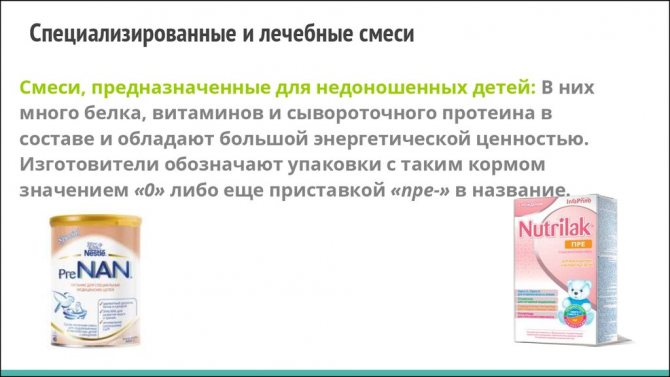
Medicinal mixtures
When to introduce hypoallergenic food?
A newborn can try the mixture already in the maternity hospital. If the baby has a hereditary tendency to allergies, then you should prepare in advance, that is, purchase a hypoallergenic mixture that is most suitable for the baby, according to doctors. Typically, partially hydrolyzed mixtures are used for these purposes.
The introduction of the correct nutritional composition from the very first days of a newborn’s life allows you to avoid many problems in the future. There are often cases when babies in the maternity hospital were given regular milk formula, and thus the allergy was suppressed. The use of hypoallergenic mixtures from birth allows you to avoid food allergies.
Classifications of children's hypoallergenic food
All hypoallergenic mixtures can be classified according to the age for which they are intended, by the form of release, by the intensity of the therapeutic effect and by the substance that replaces the allergen in the composition.
By age group, baby food for allergy sufferers is divided in the same way as regular milk formula:
- With a unit on the package, adapted products are produced for infants from birth to six months.
- Packages with a partially adapted composition are marked with the number “2” and are intended for babies from 6 months to one year.
Dry mixtures are varied and have a long shelf life
According to the release form, hypoallergenic baby food can be found in the form of:
- dry powder (characterized by long shelf life, a variety of packaging from small cardboard boxes to kilogram cans, requires dilution with water in accordance with the instructions, most mixtures are produced in the form of dry powder);
- concentrate for dilution (dilutes with water, dissolves more easily compared to powder, has shorter shelf life);
- a ready-to-drink drink (you just need to warm it up before drinking, does not need to be diluted with water, is convenient to take with you on the road, has a high price and a small assortment).
For children who have only a genetic predisposition to allergies, and for those in whom it has already made itself felt, the diet will be very different. It is important to consider that mixtures for allergy sufferers differ in purpose:
- preventive – suitable for healthy children who have a genetic predisposition to food allergies, either minor or the first manifestations of it, or as a transitional step from therapeutic to normal nutrition after long-term remission (within 3 months there are no signs of food intolerance);
- medicinal - such mixtures can only be prescribed by a doctor; they will help even with advanced allergies.
Indications for prescribing mixtures
Adapted nutrition is prescribed to newborns if the following indications exist:
- If you have a diagnosed food sensitivity.
- Hypertrophy is pronounced.
- Children suffering from intestinal absorption dysfunction.
- During disruption of the processes of digestion and absorption against the background of concomitant pathologies (intestinal resection, pancreatic failure, chronic diarrhea).
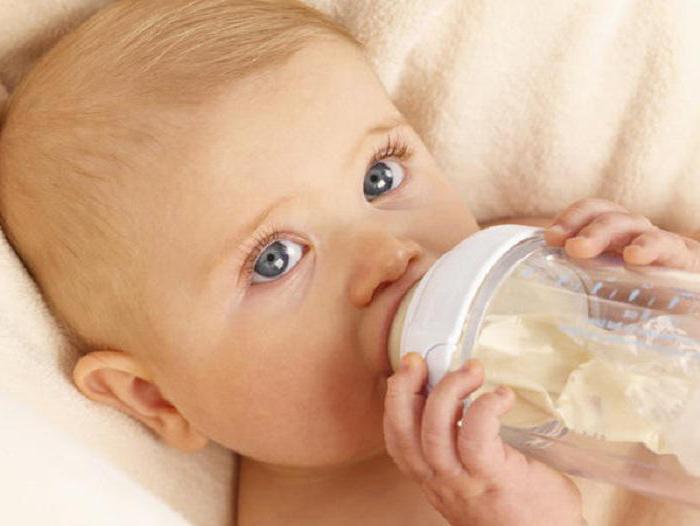
In case of diagnosed food sensitivity of moderate and severe form, adapted nutrition is prescribed only during the acute phase of the disease. When an improvement in the clinical condition is achieved, these babies take anti-allergenic formulations for preventive purposes.
Advantages and disadvantages
Compared to standard formulas, gentle nutrition has many advantageous advantages:
- It contains the life-giving elements necessary for the baby in the first year of intensive development: vital minerals and vitamins.
- It is distinguished by the content of valuable nucleotides responsible for the gradual formation of a fragile nervous system.
- It has a high degree of satiety, which is required for babies with severe susceptibility.
- It has excellent taste compared to partial hydrolysates.
- They can be introduced as the main component in the absence of natural lactation.
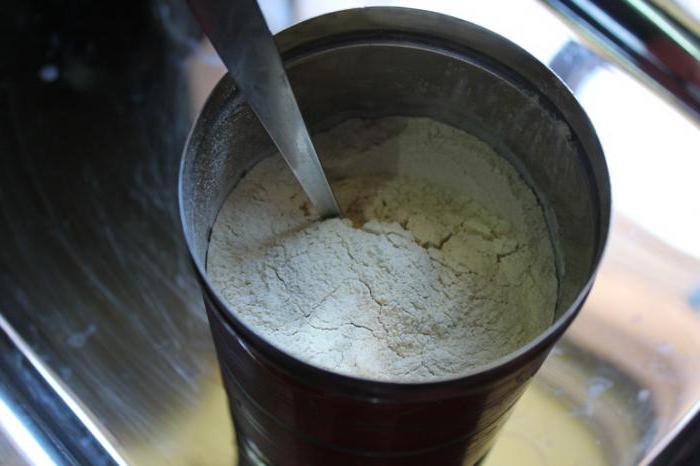
Among the expressed disadvantages, the following qualities are worth noting:
- Some components contribute to an increase in the load on the baby’s unprotected kidneys and gastrointestinal tract.
- Inflated cost of food product - up to 2400 rubles. per jar.
A baby who is constantly bottle-fed and suffers from a severe form of food sensitivity requires a special approach to the daily diet. The introduction of gentle amino acid nutrition is the optimal way out of this situation.
How to switch a child to hypoallergenic?
Any new mixture, including hypoallergenic ones, should be introduced gradually. This process should be completed no earlier than 1 week after the start of feeding. If children are at risk, it is recommended to switch to preventive formulations, and if signs of an allergic reaction appear, transfer the newborn to therapeutic nutrition.
The latter is intended for:
- treatment of food allergies of varying severity;
- restoration of absorption of the components of consumed products by the intestinal walls;
- eliminating lactose intolerance;
- leveling the negative effects of milk proteins;
- providing adequate nutrition.

When introducing hypoallergenic formulations, it is recommended to adhere to the following rules:
- initial dose - no more than 30-50 milliliters;
- gradually increase serving sizes (up to 100 milliliters on days 2-3);
- use products from one manufacturer.
These recommendations apply to products intended for both the prevention and treatment of intolerance to baby food components. In the first case, baby food is used, which includes:
- nucleotides;
- lipids;
- probiotics;
- Partially split whey.
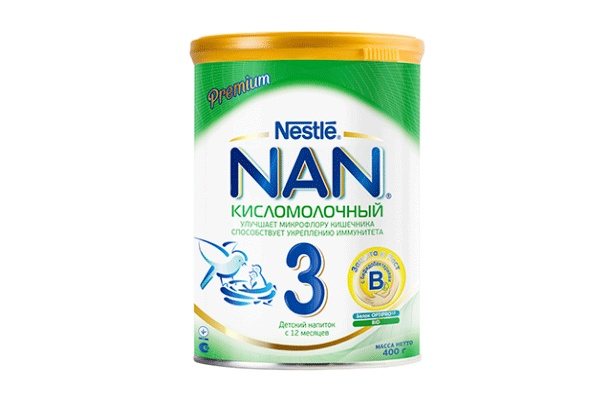
In the treatment of hypersensitivity of the body, baby food is used, including:
- Omega-3 and Omega-6 acids;
- probiotics with nucleotides;
- whey is completely disintegrated.
An uncontrolled and rapid transition to a new diet threatens the development of diarrhea and disruption of the gastrointestinal tract. In addition, because of this, children often refuse to eat.
To avoid such problems, it is recommended that before switching to a new type of feeding, you consult with your doctor about the specific formula and number of servings.
